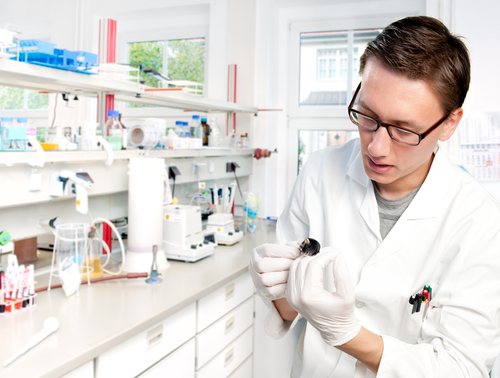New DMD Mouse Model Helps Monitor Real-Time Dystrophin Production, Study Reports

A new mouse model of Duchenne muscular dystrophy (DMD) can help researchers test potential gene editing therapies by showing real-time levels of the dystrophin protein in muscles and the heart, a study suggests.
The new strategy is a sensitive, non-invasive monitoring method, the researchers said.
Titled “In vivo non-invasive monitoring of dystrophin correction in a new Duchenne muscular dystrophy reporter mouse,” the study was published in the journal Nature Communications.
Duchenne is caused by mutations in the DMD gene, which lead to the production of none or a very small amount of the dystrophin protein, which plays a crucial role in muscle tissue integrity. The “hot spot” region for dystrophin mutations in DMD is located between exons 45 and 51. The exons are the DNA bits that contain information to generate proteins.
Researchers have tried several approaches to restore dystrophin levels and muscle function in people with DMD. Still, Exondys 51 (eteplirsen, by Sarepta Therapeutics) is the only therapy approved in the U.S. for treatment of Duchenne muscular dystrophy, the most common of the more than 30 types of MD.
Exondys 51 works by splicing out exon 51 from the DMD gene in the conversion of DNA to RNA during protein production. Thus, this exon skipping therapy is only useful for patients whose DMD is caused by mutations in exon 51, which lead to a shorter yet functional dystrophin.
The treatment requires life-long treatment with once-weekly infusions that can take up to one hour. Alternative strategies that could result in more durable dystrophin production are warranted, but have yet to be developed.
Researchers have been using animal models to assess potential DMD therapies. However, tracking how much dystrophin is being produced in target tissues, such as the muscles and the heart, has also been challenging.
A team from the Hamon Center for Regenerative Science and Medicine at UT Southwestern Medical Center in Texas, in collaboration with Exonics Therapeutics (recently acquired by Vertex Pharmaceuticals), has now developed a new approach to overcome this limitation.
In this study, mice lacking exon 50 — which the researchers called “a common mutational hotspot” — were engineered with CRISPR/Cas9 gene editing to produce a fluorescent protein called luciferase, attached to dystrophin. This means that dystrophin and luciferase are generated at the same time, providing a non-invasive way to measure the amount and localization of dystrophin. The dystrophin levels are determined by detecting luciferase’s fluorescence, or bioluminescence.
Using these mice, the researchers could confirm that DMD mutations led to low or no dystrophin, as well as signs of scarring, or fibrosis, and muscle degeneration.
But when they were administrated exon 51 skipping therapy, these mice showed a significant increase in the levels of the key protein, the researchers found.
Muscle tissue biopsies 10 weeks after treatment revealed a 68.6% increase in the amount of dystrophin in the diaphragm, 87.08% in the heart, 29.6% in the lower leg (called the tibialis anterior), and 66.5% in the triceps muscle of the upper arm, compared with untreated mice.
“Our results provide a sensitive non-invasive means of monitoring dystrophin correction in mouse models of DMD,” the scientists said.
This strategy also provides a platform to test ways to ease DMD manifestations, they added.
The team said these mice “should accelerate the preclinical development of CRISPR/Cas9 for correction of DMD mutations.” This strategy, in development for muscle dystrophy and other disorders, enabled the scientists to edit of parts of the genome by removing, adding, or changing sections of DNA.






